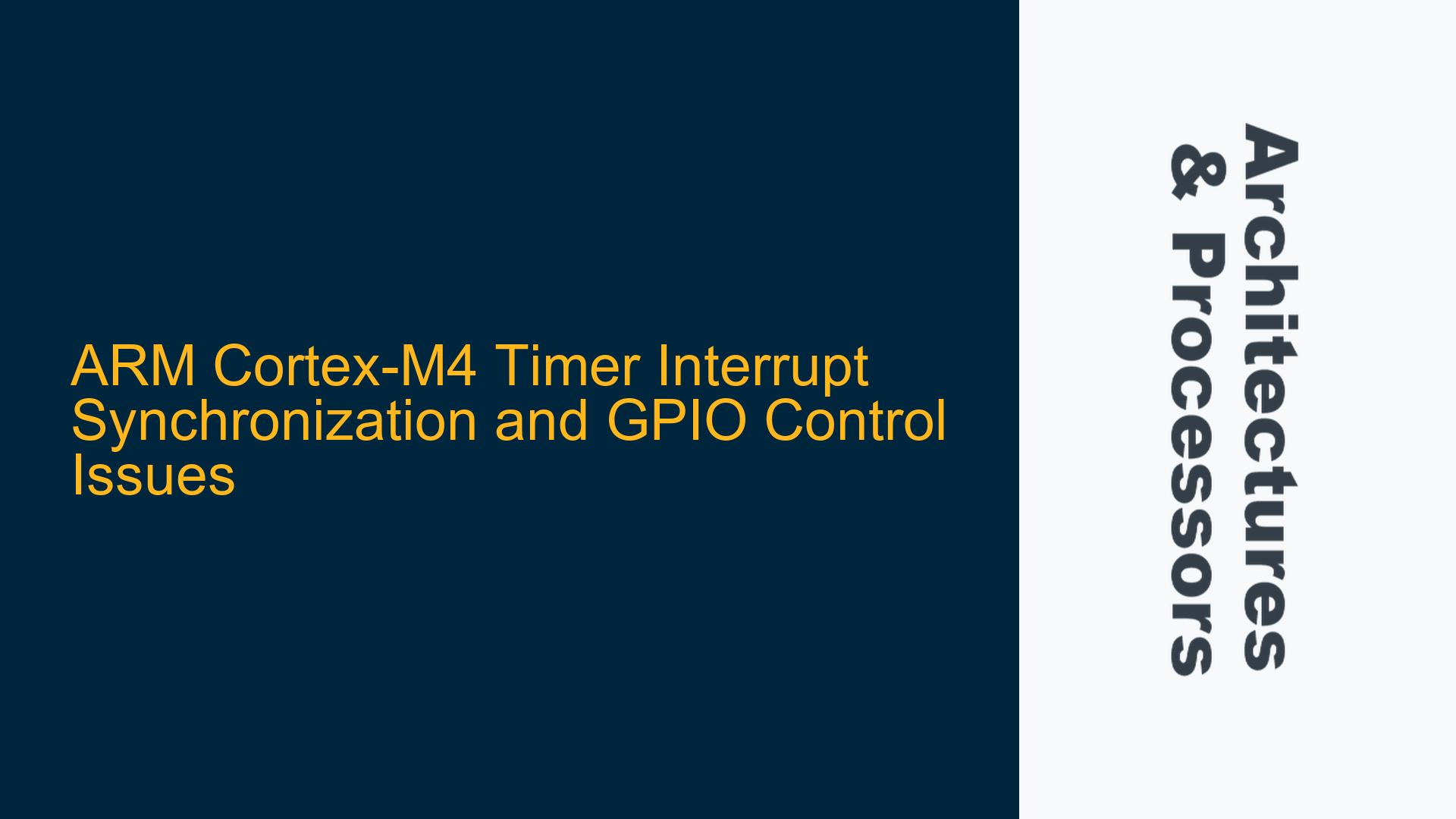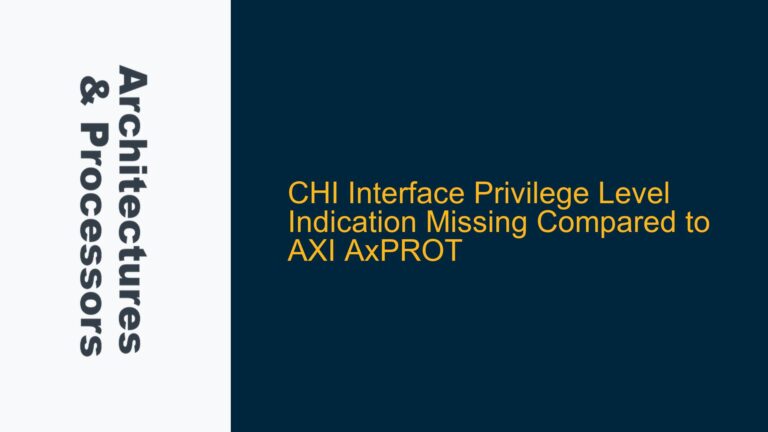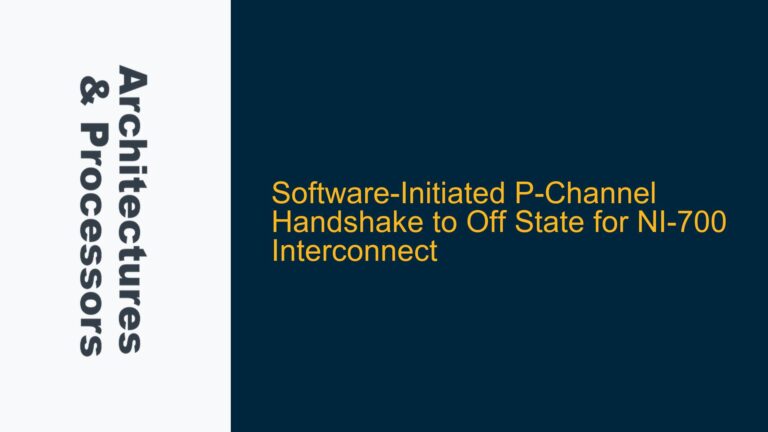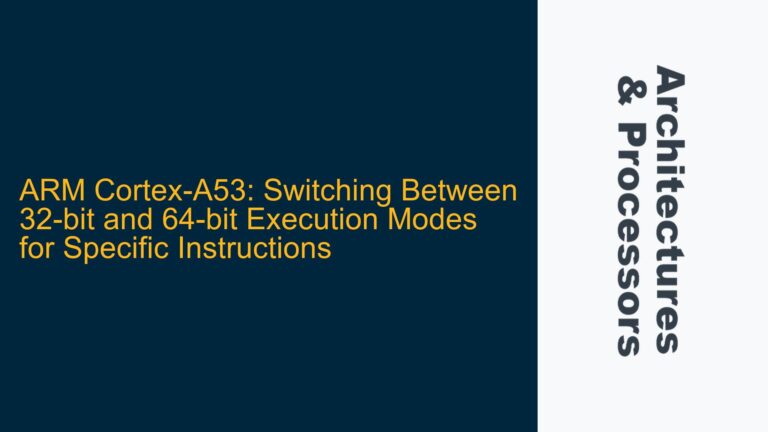Timer Interrupt Synchronization Challenges in Cortex-M4 with GPIO Control
In embedded systems utilizing the ARM Cortex-M4 processor, synchronizing timer interrupts while controlling GPIO pins can present significant challenges. The Cortex-M4, known for its real-time capabilities and efficient interrupt handling, is often employed in applications requiring precise timing and synchronization. However, when multiple timers are used concurrently, ensuring that their interrupts are synchronized can be complex, especially when these interrupts are tied to GPIO operations.
The primary issue arises when two timers, TIM0 and TIM1, are configured to trigger interrupts independently, and each interrupt is associated with setting a specific GPIO pin. The goal is to synchronize these interrupts so that the GPIO pins are set in a coordinated manner. This synchronization is crucial in applications such as motor control, where precise timing of GPIO signals can affect the performance and reliability of the system.
The Cortex-M4’s nested vectored interrupt controller (NVIC) provides a robust mechanism for handling interrupts, but it does not inherently synchronize multiple timer interrupts. Each timer operates independently, and their interrupts can occur at different times, leading to potential misalignment in GPIO operations. This misalignment can result in timing errors, which may degrade system performance or cause functional failures.
To address this issue, it is essential to understand the underlying mechanisms of the Cortex-M4’s timers and interrupts, as well as the specific implementation details of the microcontroller being used. The following sections will explore the possible causes of synchronization issues and provide detailed troubleshooting steps and solutions.
Timer Configuration and Interrupt Priority Mismanagement
One of the primary causes of timer interrupt synchronization issues in the Cortex-M4 is improper configuration of the timers and mismanagement of interrupt priorities. Each timer in the Cortex-M4 can be configured with different prescalers, reload values, and interrupt priorities. If these parameters are not set correctly, the timers may not trigger their interrupts at the desired times, leading to misalignment in GPIO operations.
The Cortex-M4’s NVIC allows for the configuration of interrupt priorities, which determine the order in which interrupts are serviced. If the interrupt priorities for TIM0 and TIM1 are not set appropriately, one timer’s interrupt may preempt the other, causing delays in the execution of the second interrupt. This preemption can result in a lack of synchronization between the GPIO operations triggered by the two timers.
Additionally, the timers’ prescalers and reload values must be carefully configured to ensure that the timers generate interrupts at the desired intervals. If the prescalers are set too high or too low, the timers may not generate interrupts at the expected times, leading to further misalignment. The reload values must also be set correctly to ensure that the timers generate interrupts at the desired frequency.
To address these issues, it is crucial to carefully configure the timers’ parameters and set the interrupt priorities appropriately. The following section will provide detailed steps for configuring the timers and managing interrupt priorities to achieve synchronization.
Configuring Timer Parameters and Implementing Interrupt Synchronization Mechanisms
To achieve synchronization between TIM0 and TIM1 interrupts in the Cortex-M4, it is essential to configure the timers’ parameters correctly and implement mechanisms to ensure that the interrupts are serviced in a coordinated manner. The following steps outline the process for configuring the timers and implementing interrupt synchronization mechanisms.
First, configure the timers’ prescalers and reload values to ensure that they generate interrupts at the desired intervals. The prescaler divides the input clock frequency to the timer, and the reload value determines the interval at which the timer generates an interrupt. By setting these parameters correctly, you can ensure that the timers generate interrupts at the expected times.
Next, configure the interrupt priorities for TIM0 and TIM1 using the NVIC. The NVIC allows you to set the priority of each interrupt, with lower values indicating higher priority. To ensure that the interrupts are serviced in a coordinated manner, set the interrupt priorities for TIM0 and TIM1 to the same value. This configuration ensures that neither interrupt preempts the other, allowing both interrupts to be serviced in a timely manner.
In addition to configuring the timers and interrupt priorities, implement a synchronization mechanism to ensure that the GPIO operations triggered by the interrupts are coordinated. One approach is to use a shared variable or flag that is set by one timer’s interrupt service routine (ISR) and checked by the other timer’s ISR. When the first timer’s ISR sets the flag, the second timer’s ISR can check the flag and perform the GPIO operation only if the flag is set. This mechanism ensures that the GPIO operations are performed in a coordinated manner.
Another approach is to use a hardware synchronization mechanism, such as a timer synchronization register, if available in the microcontroller. Some microcontrollers provide registers that allow you to synchronize multiple timers by starting them simultaneously or by triggering one timer from another. By using these registers, you can ensure that the timers generate interrupts at the same time, leading to synchronized GPIO operations.
Finally, test the synchronization mechanism by running the timers and observing the GPIO operations. Use an oscilloscope or logic analyzer to monitor the GPIO pins and verify that the operations are performed in a coordinated manner. If the synchronization is not achieved, revisit the timer configurations and interrupt priorities, and adjust them as necessary.
By following these steps, you can achieve synchronization between TIM0 and TIM1 interrupts in the Cortex-M4 and ensure that the GPIO operations are performed in a coordinated manner. This synchronization is crucial in applications requiring precise timing and can significantly improve the performance and reliability of the system.
In conclusion, synchronizing timer interrupts in the Cortex-M4 while controlling GPIO pins requires careful configuration of the timers’ parameters and interrupt priorities, as well as the implementation of synchronization mechanisms. By following the detailed steps outlined in this guide, you can achieve the desired synchronization and ensure that your system operates reliably and efficiently.






